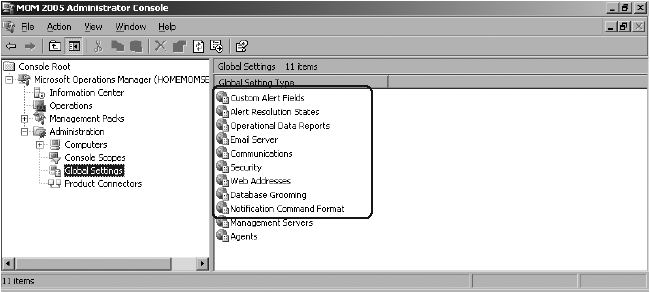Chapter 5. Administering Global Settings
The Global Settings node in the Administrator console allows you to configure the default values for agents, management servers, and security for the whole management group. In some cases, you can override the settings for the agents and the management servers by using their properties. This was shown in Chapters 2, 3, and 4.
There is another class of global settings that apply to the management group as a whole. They do not have a category name of their own, but are the rest of the settings (other than Agents and Management Servers in the Global Settings node), as shown in Figure 5-1.
This chapter explores the functions of the other global settings that control management group behavior and when you would want to modify them.

Figure 5-1. All other global settings
These nine settings can be classified into three categories by function: alerts, connections and communication settings, and maintenance settings. The Security settings tab is covered in Chapter 3.
Alerts
The first four settings relate to alerts and responses to alerts. The Notification Command Format , the Alert Resolution State, and the Custom Alert Field global settings work in concert with the event, performance, and alert rules in the rule groups. These settings set the default behavior of an alert, or modify the default information that is included in an alert at the time of its creation. ...
Get Essential Microsoft Operations Manager now with the O’Reilly learning platform.
O’Reilly members experience books, live events, courses curated by job role, and more from O’Reilly and nearly 200 top publishers.

